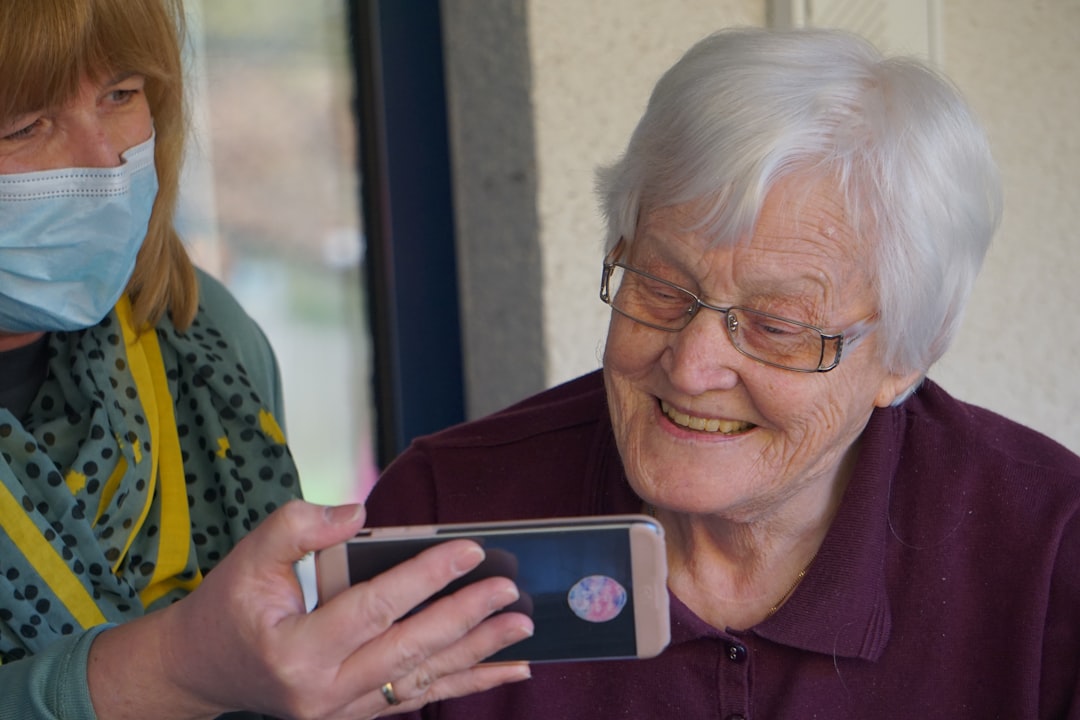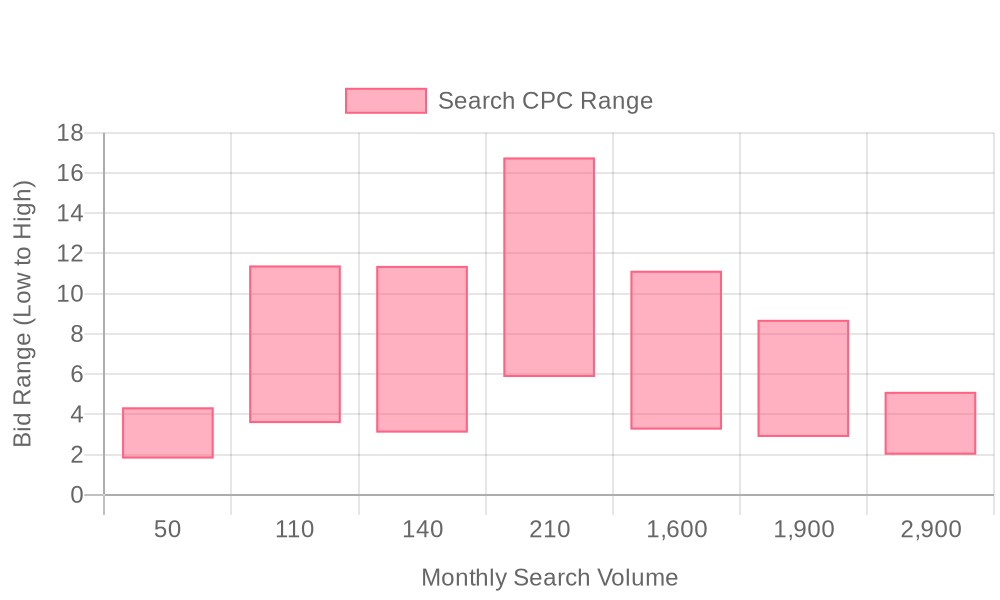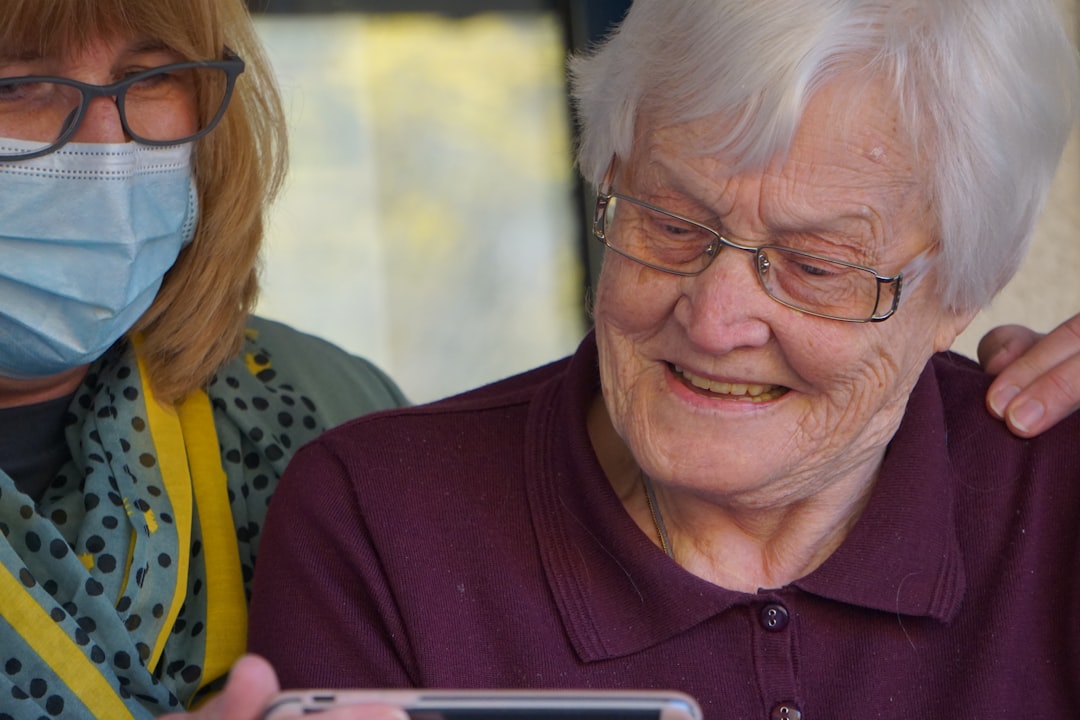
Supercharge your lead generation with a FREE Google Ads audit - no strings attached! See how you can generate more and higher quality leads
Get My Free Google Ads AuditFree consultation

No commitment
Supercharge your lead generation with a FREE LinkedIn Ads audit - no strings attached! See how you can generate more and higher quality leads
Get My Free Google Ads AuditFree consultation

No commitment
Supercharge your lead generation with a FREE Meta Ads audit - no strings attached! See how you can generate more and higher quality leads
Get My Free Google Ads AuditGet My Free LinkedIn Ads AuditGet My Free Meta Ads AuditFree consultation

No commitment
Supercharge your lead generation with a FREE Google Ads audit - no strings attached! See how you can generate more and higher quality leads
Get My Free Google Ads AuditFree consultation

No commitment
In the competitive landscape of home care services, leveraging Google Ads for Residential Care can significantly transform your marketing efforts. Missing high-value prospects because they aren’t tracked in the CRM is a common frustration in the industry. Capturing potential clients precisely when they express a need or interest in residential care services is why Google Ads is indispensable. As a bridge between initial awareness and eventual conversion, Google Ads can intercept prospective clients actively searching for care solutions, effectively maximizing the synergy between your online exposure and offline presence.

A successful residential care marketing strategy demands data-driven precision at every step. Modern paid search tactics now allow revenue teams to connect ad spend directly to high-value decision makers, moving beyond generic impressions to actionable engagement. To deepen your understanding of attribution and data-driven marketing, explore the Sona blog for actionable insights.
Integrating Google Ads for Residential Care within your broader digital mix unlocks advanced targeting, intent-based segmentation, and cross-channel tracking. Sophisticated marketers can now identify anonymous visitors and match them to real companies, ensuring that every click is traceable and every lead is enriched for full-funnel impact.
These techniques form the backbone of a modern, results-focused approach to PPC for residential care. Through tight data integration, intent-driven targeting, and seamless cross-channel orchestration, teams achieve superior lead quality, higher occupancy rates, and a measurable boost in overall marketing ROI. Ready to see how these strategies can work for you? Get started for free with Sona.
Residential care providers operate in a market defined by urgency, specialized needs, and high-value decisions. Google Ads for Residential Care creates direct connections with families and decision-makers precisely when they are searching for solutions, targeting high-intent queries that signal readiness to engage. This approach bypasses the broad, slow-burn awareness of social channels, instead positioning your services at the top of search results just as the need materializes.
The speed of digital outreach is crucial for residential care marketing. Traditional advertising often falls short when immediate placement or crisis care is needed, but Google Ads accelerates lead capture by surfacing your facility to in-market families in real time. Modern technology empowers marketers to leverage intent-based audience segments, ensuring that budgets focus on those most likely to convert. This means ad spend is dynamically allocated to the most promising leads, enhancing both efficiency and occupancy rates.
Integrated data analysis transforms advertising from a guessing game into a strategic growth engine. By connecting digital ad engagement with offline outcomes, marketers can finally close the loop on ROI measurement. Utilizing advanced attribution and CRM integration, campaigns reveal which keywords, audiences, and creative assets actually drive admissions. This unification of digital and offline data provides actionable insight, allowing for rapid iteration and smarter budget allocation in every phase of your demand generation. If you’re ready to see how this works for your team, get started for free with Sona.

To see how unified marketing analytics and real-time data can drive more qualified leads for your residential care business, get started for free with Sona.

Expanding growth in residential care marketing begins with vertical keyword targeting. By layering service-focused and condition-specific keywords on top of traditional search terms, teams capture nuanced search intent that aligns with families’ specific needs. This approach surfaces high-conversion opportunities that generic or broad targeting often misses, especially when data-driven segmentation reveals gaps in current campaigns. When marketers integrate vertical keyword strategies, they not only reach prospects actively seeking residential care but also unlock overlooked segments with distinct requirements.
Competitor gap analysis is essential for identifying untapped market segments. Evaluating which audiences and topics competitors dominate—and where they are absent—enables teams to prioritize spend more efficiently. Many residential care marketers struggle with incomplete company interaction data, which leads to misallocated budgets and missed opportunities. Using visitor identification, teams can reveal which high-value companies are slipping through the cracks. This insight empowers revenue leaders to reallocate resources to segments with the greatest growth potential, eliminating guesswork and maximizing campaign ROI.
Exploring industry-specific content placements elevates brand visibility among targeted decision-makers. Placing educational resources, case studies, or expert interviews on platforms frequented by families and healthcare professionals ensures that messaging reaches an audience primed for engagement. These placements drive qualified traffic and build authority in the residential care space, especially when paired with precise audience intelligence. Marketers who leverage data to identify which industry channels deliver the highest return can continuously optimize placements for scale and relevance.
Retargeting with educational assets—such as guides, how-to articles, or virtual tour invitations—nurtures prospects who are not yet ready to convert. Leveraging advanced conversion tracking and CRM integration, marketers can build dynamic audiences that evolve as leads engage with different content types. This enables personalized retargeting sequences that move families through the decision journey, increasing touchpoint relevance and reducing drop-off. By syncing enriched lead data directly into ad platforms and marketing automation tools, revenue teams ensure that every retargeting effort is informed by the most current engagement and intent signals. To start building smarter retargeting campaigns, get started for free with Sona.

Audience segmentation is essential for residential care marketing teams striving to maximize engagement and lead quality. By identifying distinct client types—such as seniors needing memory care, assisted living, or skilled nursing—marketers can align campaigns with specific needs and decision timelines. Segmentation anchored in firmographic data, like family decision-maker profiles and local referral patterns, resolves poor engagement by enabling personalized messaging that resonates across each stage of the customer journey.
Integrating real-time intent signals into audience segmentation allows marketers to distinguish between families urgently seeking placement and those planning for future transitions. Behavioral data, such as repeat website visits to cost calculators or frequent downloads of care guides, signals readiness for outreach or tailored offers. With dynamic audience capabilities, segments automatically update as leads move from early-stage research to active inquiry, ensuring ad creative and budget shift toward the highest-converting prospects.
Within Google Ads for Residential Care, segmenting ad groups by service type or urgency level ensures that messaging, calls to action, and value propositions align closely with each audience’s immediate priorities. Marketers can allocate larger budgets to segments demonstrating strong in-market behaviors, improving cost efficiency and overall inquiry rates. By syncing enriched audience data and CRM insights directly into ad platforms, teams maintain precise, up-to-date targeting while measuring true ROI with advanced conversion tracking across both online and offline touchpoints. This unification of segmentation, targeting, and measurement drives the sustained growth and operational efficiency that B2B revenue teams expect from modern, data-driven home care marketing. To see how segmentation can drive results, get started for free with Sona.

| Industry | Keyword | Monthly Search Volume | Competition Level | Low Bid | High Bid |
| Residential Care | average monthly cost of retirement home | 50 | LOW | 1.81 | 4.35 |
| Residential Care | residential respite care | 110 | LOW | 3.57 | 11.4 |
| Residential Care | aged care homes | 140 | LOW | 3.1 | 11.38 |
| Residential Care | residential care homes for elderly | 210 | LOW | 5.86 | 16.77 |
| Residential Care | residential care homes | 1600 | LOW | 3.25 | 11.14 |
| Residential Care | residential care | 1900 | LOW | 2.88 | 8.7 |
| Residential Care | rcfe | 2900 | LOW | 2 | 5.12 |
A robust keyword strategy is fundamental for any residential care provider aiming to maximize the impact of their Google Ads campaigns. High-intent families searching for immediate solutions rely on specific terms to find the right care, making it essential to target keywords that capture this urgency and intent. By focusing on high-volume, service-specific queries—such as “24-hour memory care near me,” “assisted living in [city],” or “residential dementia care with availability”—marketers can position their facility at the top of search results, directly in front of those most likely to convert. For additional keyword ideas tailored to assisted and senior living, refer to top-performing keywords for senior living.
To ensure only the most qualified leads reach your landing pages, deploying strategic negative keywords is critical. Excluding phrases like “jobs in senior care,” “free elderly care,” or “volunteer opportunities” filters out irrelevant clicks and preserves budget for prospective resident families. This approach not only increases conversion rates but also improves cost efficiency across entire campaigns, allowing teams to allocate more spend toward keywords proven to drive valuable inquiries. For more actionable tips, you can explore our marketing playbooks for campaign optimization.
Audience data plays a transformative role in refining keyword targeting over time. By integrating visitor identification and real-time intent signals, marketers can uncover which searchers are actively evaluating care options, filter out low-quality visits, and dynamically adjust spend toward segments that show the highest likelihood to engage. With advanced tools, these insights feed directly into CRM and ad platforms, syncing enriched audiences and enabling continuous optimization. As a result, every campaign iteration brings tighter alignment between searcher intent and ad spend, with dynamic audiences updating as leads move through the funnel. This level of specificity ensures that residential care facilities not only attract more inquiries but also drive higher-quality conversations, supporting occupancy goals and long-term growth.
A stepwise campaign execution framework ensures residential care marketers maximize every dollar spent on Google Ads. Streamlined processes help teams move from scattered, underperforming campaigns to organized, data-driven programs that consistently generate qualified leads for home care, senior living, and specialized residential care services. For additional insights, visit our marketing analytics blog.
This framework emphasizes precision at every stage: from intent-driven keyword selection to seamless CRM and ad platform integration. Marketers leveraging unified data workflows realize faster feedback cycles, clearer attribution, and agile optimization—critical for improving occupancy rates and controlling acquisition costs.
Success in Google Ads for Residential Care begins with assembling high-intent, service-specific keyword lists. Focus on combinations like “memory care near me,” “24-hour Alzheimer’s home care,” and “senior living in [city].” Layer geographic modifiers to capture searchers within your actual service radius. This approach delivers more relevant traffic and reduces wasted clicks from people outside your market. For a list of top-performing keywords in this industry, explore this external resource.
Integrating visitor identification and in-market behavior signals allows revenue teams to go beyond static keyword lists. Marketers can surface hidden demand: uncovering which companies and accounts are searching for residential care options. This enables dynamic audience building, where keywords and targeting criteria continually update based on real-world intent signals and CRM data enrichment.
Effective ad copy for residential care must resonate with families facing urgent, emotional decisions. Prioritize headlines that address core pain points—such as safety, specialized care, and peace of mind. Use clear calls to action like “Book a Virtual Tour” or “Speak with a Care Advisor Today.” Strong ad copy differentiates your services and cuts through the noise of generic, template-based marketing. For step-by-step guidance, check out this Google Ads guide for senior care.
Teams using real-time audience insights can craft even more relevant messaging. When ad platforms sync with CRM profiles and engagement history, every impression can reflect the lead’s stage in the decision process. Personalized ads improve click-through rates, keep acquisition costs in check, and boost overall Google Ads effectiveness for home care and residential care providers.
Every Google Ads click should land on a page tailored to the searcher’s intent. Build dedicated landing pages for each major service line: memory care, assisted living, respite services, and more. Streamline the experience with concise copy, visible contact forms, and direct phone or chat options. Avoid generic homepages that dilute message match and lower conversion rates.
With modern marketing technology, teams can track not only online form fills but also offline actions—like phone inquiries and in-person visits. Connecting these offline conversion events back to specific ad groups closes the attribution loop. Granular, cross-channel measurement enables smarter budget allocation and helps pinpoint which service pages and marketing messages truly drive home care lead generation.
Ongoing optimization is essential for maintaining campaign profitability in the competitive residential care sector. Set up robust conversion tracking to monitor actions across web, phone, and offline touchpoints. Analyze metrics such as cost-per-inquiry, conversion rate by service, and audience engagement trends. For practical optimization strategies, see how Google Ads helps home care providers.
Leverage real-time intent data to shift spend toward high-converting accounts. When audiences update dynamically as leads move through the funnel, marketers can retarget families who are still evaluating options and suppress spend on those already placed. Syncing CRM-enriched audiences into Google Ads keeps targeting fresh, ensures compliance, and maximizes return on ad spend for every campaign. This closed-loop, data-driven approach turns PPC for residential care into a true growth engine.
Ready to put these strategies into action? Get started for free with Sona.

Expanding the digital reach of residential care services requires a coordinated approach that aligns paid advertising with broader marketing initiatives. By leveraging cross-promotion strategies, care providers can amplify their campaigns’ impact, ensuring each marketing asset drives awareness and engagement across multiple channels. Integrating Google Ads with email sequences, social content, and educational resources enables facilities to stay top-of-mind with families evaluating care options. For a deeper dive into the basics of using Google Ads for home care, explore Google Ads for home care.
Partnering with industry associations and local care networks extends visibility and builds credibility. These collaborations often grant access to exclusive advertising opportunities and referral networks, placing your facility in front of larger, more targeted audiences. When these partnership-driven leads are tracked and attributed alongside Google Ads data, marketers can pinpoint which alliances produce the highest-converting prospects, enabling smarter budget allocations. Learn more about account identification techniques to uncover high-value visitors for sales targeting.
Geographic targeting remains critical for residential care organizations. By focusing ad spend on specific zip codes or regions, providers can attract inquiries from families within their actual service area, eliminating wasted impressions. Using dynamic audience segmentation, marketers can adjust their targeting as demand shifts, ensuring that campaigns always reach those most likely to convert. For multi-location operators, this approach helps tailor messaging and offers to the unique needs of each local market.
Analyzing search data from Google Ads uncovers emerging trends and content gaps, directly informing blog topics, FAQs, and downloadable resources that resonate with prospective clients. By unifying ad data with on-site behavior and CRM insights, residential care marketers move beyond surface-level metrics to identify true buying signals and high-potential accounts. This data-driven feedback loop empowers teams to refine messaging, anticipate common questions, and build content that supports every stage of the family decision journey.
Optimizing Google Ads for residential care goes beyond traditional PPC tactics. Success depends on strategic keyword targeting, granular audience segmentation, and a unified view of user behavior across touchpoints. When marketers apply real-time insights and predictive analytics to campaign management, they can shift budget toward high-intent accounts, adjust messaging in response to live market trends, and measure performance with both online and offline attribution. This results in actionable, measurable outcomes that fuel sustainable growth and maximize marketing effectiveness for residential care organizations. To see how you can unify your digital campaigns and drive measurable results, get started for free with Sona.
Navigating the digital marketing landscape for residential care services can be challenging, yet incredibly rewarding when executed effectively. This article has explored the strategic use of Google Ads to enhance visibility and attract clients, highlighting the tools and tactics that can set your residential care services apart in a competitive market.
We discussed the core challenges of reaching your target audience and optimizing your ad spend, while providing actionable strategies like keyword optimization, audience targeting, and performance tracking. These insights are designed to empower you to make data-driven decisions that maximize your advertising impact and return on investment.
With the right approach, you can transform your marketing efforts, increase your service's visibility, and ultimately improve client acquisition. Embrace the possibilities that Google Ads offer and take proactive steps to ensure your residential care services stand out in the digital space.
To further streamline and enhance your marketing efforts, start for free and explore how our platform can unify your go-to-market data, providing you with actionable insights tailored to your needs.
To effectively use Google Ads for your residential care business, focus on data-driven precision, integrate with CRM systems, and use real-time audience segmentation to target in-market behaviors. Ensure your ads connect with relevant landing pages and optimize for cross-channel engagement.
The budget for Google Ads in residential care should dynamically target high-intent accounts and focus on campaigns that show immediate interest in services like home care or senior living, optimizing spend for efficiency and higher conversion rates.
Effective keywords for Google Ads in home care include high-intent, service-specific terms such as '24-hour memory care near me,' 'assisted living in [city],' and 'residential dementia care with availability.' Negative keywords like 'jobs in senior care' help filter out irrelevant clicks.
Success is measured by linking online and offline touchpoints using advanced conversion tracking and attribution models, analyzing metrics like cost-per-inquiry and conversion rate by service, and syncing these insights with CRM data for continuous optimization.
Common mistakes include not integrating Google Ads with CRM systems, using broad demographic filters instead of dynamic audience segmentation, failing to align ad experiences with landing pages, and neglecting cross-channel engagement.
Join results-focused teams combining Sona Platform automation with advanced Google Ads strategies to scale lead generation

Connect your existing CRM

Free Account Enrichment

No setup fees
No commitment required

Free consultation

Get a custom Google Ads roadmap for your business
Join results-focused teams combining Sona Platform automation with advanced Meta Ads strategies to scale lead generation

Connect your existing CRM

Free Account Enrichment

No setup fees
No commitment required

Free consultation

Get a custom Google Ads roadmap for your business
Join results-focused teams combining Sona Platform automation with advanced LinkedIn Ads strategies to scale lead generation

Connect your existing CRM

Free Account Enrichment

No setup fees
No commitment required

Free consultation

Get a custom Google Ads roadmap for your business
Join results-focused teams using Sona Platform automation to activate unified sales and marketing data, maximize ROI on marketing investments, and drive measurable growth

Connect your existing CRM

Free Account Enrichment

No setup fees
No commitment required

Free consultation

Get a custom Google Ads roadmap for your business
Over 500+ auto detailing businesses trust our platform to grow their revenue
Join results-focused teams using Sona Platform automation to activate unified sales and marketing data, maximize ROI on marketing investments, and drive measurable growth

Connect your existing CRM

Free Account Enrichment

No setup fees
No commitment required

Free consultation

Get a custom Google Ads roadmap for your business
Over 500+ auto detailing businesses trust our platform to grow their revenue
Join results-focused teams using Sona Platform automation to activate unified sales and marketing data, maximize ROI on marketing investments, and drive measurable growth

Connect your existing CRM

Free Account Enrichment

No setup fees
No commitment required

Free consultation

Get a custom Google Ads roadmap for your business
Over 500+ auto detailing businesses trust our platform to grow their revenue
Our team of experts can implement your Google Ads campaigns, then show you how Sona helps you manage exceptional campaign performance and sales.
Schedule your FREE 15-minute strategy sessionOur team of experts can implement your Meta Ads campaigns, then show you how Sona helps you manage exceptional campaign performance and sales.
Schedule your FREE 15-minute strategy sessionOur team of experts can implement your LinkedIn Ads campaigns, then show you how Sona helps you manage exceptional campaign performance and sales.
Schedule your FREE 15-minute strategy sessionOur team of experts can help improve your demand generation strategy, and can show you how advanced attribution and data activation can help you realize more opportunities and improve sales performance.
Schedule your FREE 30-minute strategy sessionOur team of experts can help improve your demand generation strategy, and can show you how advanced attribution and data activation can help you realize more opportunities and improve sales performance.
Schedule your FREE 30-minute strategy sessionOur team of experts can help improve your demand generation strategy, and can show you how advanced attribution and data activation can help you realize more opportunities and improve sales performance.
Schedule your FREE 30-minute strategy sessionOur team of experts can help improve your demand generation strategy, and can show you how advanced attribution and data activation can help you realize more opportunities and improve sales performance.
Schedule your FREE 30-minute strategy session





Launch campaigns that generate qualified leads in 30 days or less.
